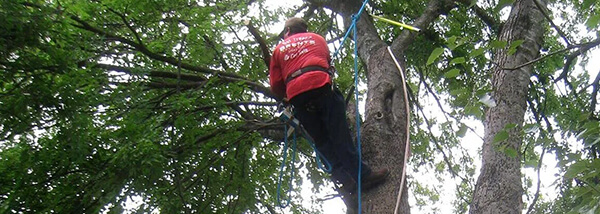Tree Pruning Tips & Tricks
|5.22.19
To keep your yard looking clean and beautiful, tree pruning is a must. Tree pruning is the most common form of tree maintenance and it comes with its own set of rules, regulations and tips to maintain the tree’s structure and prolong its life. Each cut to a tree has the chance to alter the growth of the tree, so it’s important that each cut has a purpose.
One of the most common reasons people prune trees is to remove dead branches that could be hazardous, prone to falling or flammable. Trees are also commonly pruned to increase light and air penetration – both to the tree’s crown and to the shrubbery and smaller trees below. The last common reason people typically trim trees is for aesthetics and to improve the way a tree looks, both by itself and among other landscaping.
When deciding when to prune your trees, you first need to determine why you’re pruning them in the first place. For example, if you’re looking to just remove weak, diseased or dead limbs, feel free to do that at any time of year. If you’re looking to trim for light penetration or aesthetics however, pruning before spring growth will provide the best results, as that’s when growth and would closure are maximized.
4 Common Pruning Techniques
Now that you understand when you should prune your trees, we will dive into the four most common types of tree pruning.
- Cleaning: When you clean your house, you’re removing crumbs, stains and other intrusive debris. Cleaning a tree follows the same rules, as it’s the removal of dead, dying, diseased and weak branches from the healthy tree.
- Thinning: When you thin a tree, you’re essentially opening the foliage of the tree to improve its structure and allow increased light and air to penetrate the crown of the tree. Tree thinning will result in a healthier tree.
- Raising: Tree raising is all about tree branch height. It involves removing the lower branches from trees to provide room for buildings, cars, people and even pets. You will often see tree raising to prepare for the building of a new structure.
- Reduction: Is your tree getting too large? You might need to implement reduction pruning. Like the name suggests, reduction pruning reduces the size of a tree. While typically used to ensure a power line clearance, reduction pruning can be used anytime the size of a tree needs to be reduced.
Now that you understand why you should prune a tree, when you should do it and what kind of pruning you should implement, you need to find the right people to do it. If you’re in the Austin area, Brents Tree Service can handle all of your pruning needs. Give us a call today!

